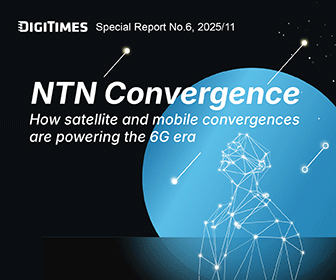The Wi-Fi 7 market is expected to take off in the second half of 2024, driven by strong demand from mobile and PC applications. Taiwan-based IC design houses are well-positioned to benefit from this boom. While prices remain a major hurdle for Wi-Fi 7 adoption, they are expected to decrease as production volumes increase.
Taiwan-based IC design houses, including MediaTek, Realtek, and RichWave Technology, are strategically stockpiling Wi-Fi 7 main chips and RF modules in anticipation of a surge in demand starting Q2 2024, positioning themselves to capitalize on the upcoming shipment boom.
Despite market expectations for Wi-Fi 6/6E to remain dominant, Wi-Fi 7 shipments are poised for a significant ramp-up in the second half of 2024, bringing a welcome boost to chipmakers' operations. Overall, networking chip demand in the first half remained sluggish, with high inventory levels persisting among telecom operators, a key customer segment. However, Wi-Fi chips have shown relative stability compared to other products in this sector.
For MediaTek and Realtek, Wi-Fi 6/6E is expected to dominate core applications like PCs and routers in 2024, with Wi-Fi 7 demands rising. RichWave has capitalized on the trend of Wi-Fi 7 driving demand for RF front-end modules. Their strategic focus on mobile phones and telecom operators positions them to reap rewards in the second half of 2024, with promising prospects for consistent growth throughout the year.
Wi-Fi 7 Adoption in PCs and Routers
High-end new PC models will undoubtedly feature Wi-Fi 7. Capitalizing on the AI PC upgrade wave, some brands are considering introducing Wi-Fi 7 to non-high-end models to incentivize consumer replacement.
Routers will also see a rollout of Wi-Fi 7 products in the consumer market. The benefits are expected to go beyond speed. Wi-Fi 7 unlocks new functionalities, transforming routers from simple signal providers into intelligent hubs. Leveraging AI computing, these next-gen routers will optimize Wi-Fi channels and traffic for all connected devices within a given space.
Traditionally, Taiwan-based IC design houses have taken a more cautious approach to the Wi-Fi 7 market, leading US-based counterparts to dominate the consumer market in the initial stages.
This trend has begun to change, as Taiwan-based design houses are demonstrably closing the gap, successfully cultivating major customers in Europe and the US. MediaTek, for instance, has reportedly secured orders in the consumer Wi-Fi 7 market. Likewise, RichWave is gaining traction with European and US telecom operators, putting them in direct competition with US suppliers.
Future Outlook and Challenges
Industry insiders point out that the increasing demand for Wi-Fi 7 in the second half of this year is just the beginning, with the shipment ratio expected to increase over time. They also expect Wi-Fi 7 to become mainstream by the second half of 2025, achieving widespread adoption on par with Wi-Fi 6/6E by 2026.
Still, this optimistic outlook hinges on market acceptance of the new technology and effective price control. Industry insiders believe that with experience in design, development, and production ramp-up, costs and prices are expected to fall.




